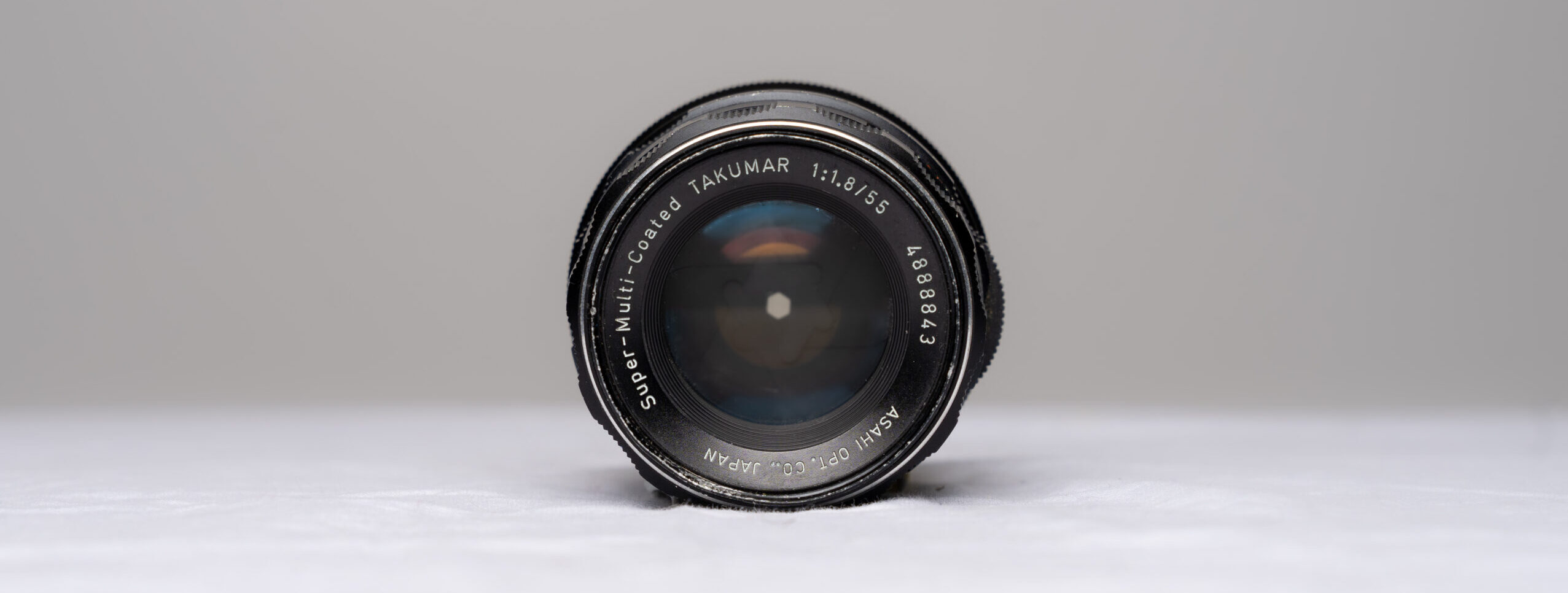There are a lot of vintage lenses with the Takumar name out there. The one I happened to get my hands on is the 55mm f1.8. When I got these lenses, a friend who has been collecting vintage glass longer than I have helped me sort through them. According to him, the ones that say “Super-Multi-Coated” are considered better than the ones that don’t, because they have a coating on them that is supposed to reduce reflections and flare. Near the end of the brand lifetime, they abbreviated Super-Multi-Coated to just SMC. I’m told the coating isn’t as good on those, but have not actually compared any yet. When abbreviating, S-M-C refers to the “Super-Multi-Coated” variety and SMC is the later variety.
Before we get into the specifics of this lens, here’s a bit of a history lesson. Takumar lenses were manufactured by Asahi Optical. Asahi Optical was founded in 1919 in a shop in a suburb of Japan where they originally made lenses for glasses. In 1938, it changed its name to Asahi Optical Co. Ltd., and sometime around then started manufacturing camera lenses. The company was disbanded by the occupation after WWII, but was allowed to reform in 1948. At which point, they started making binoculars and consumer camera lenses for two other Japanese companies, which later became Konica and Minolta.
- In 1952, Asahi Optical introduced the Asahiflex, which was the first Japanese SLR 33mm film camera. Asahi acquired the trademark “Pentax” in 1957 from the East German Zeiss Ikon company. It distributed photographic equipment under the name “Asahi Pentax”, and was exported to the US by Honeywell as “Honeywell Pentax” for a while.
- In 2002, the company was renamed “Pentax Corporation”
- In 2007, they were bought out by Hoya.
- In 2011, Hoya sold off the camera business to Ricoh who renamed it “Pentax Ricoh Imaging Company, Ltd.”.
Takumar was the name of the lenses that Asahi Optical made for its Asahiflex camera. They are named for the Japanese-American portrait painter, Takuma Kaiiwara, whose brother, Kumano Kaiiwara, founded Asahi Optical. Asahi Optical used the name Takumar until 1975 when Asahi switched from the M42 screw mount to the K-mount typically associated with Pentax cameras. So any lens with the name Takumar was probably made some time between 1952 and 1975.
Pentax resurrected the Takumar name in the 1980s and 1990 for a budget line of zoom and prime lenses. These lack the “Super-Multi-Coating” that reduces reflections and lens flair. As a result, these lenses are less desirable. These are marked “Takumar (Bayonet)” or “Takumar-F” to distinguish them from the older M42 screw-mount versions.
In researching these lenses, I found that the 55mm f1.8 like I have sells on E-Bay for $50 to $60 (as of September, 2021). The 50mm f1.4 sells for about twice that. I also have a Takumar 28-80mm f3.5/4.5, and that one goes on E-Bay for about $14.
Physical Characteristics
This lens has an M42 screw mount. I used a Neewer M42 to E-mount adaptor (about $12 on Amazon) to mount it to my Sony A7II. An important feature to look for in an M42 adaptor is a set screw to allow you adjust the “up” position when fully screwed in. I have another adaptor which works well for some lenses, but for others, when you screw the lens all the way in, the settings are all on the bottom.
The aperture goes from f1.8 to f16 in half-stop increments (except 11 to 16 only has one click). The iris has 6 blades.
There is an Auto/Manual switch. In the Manual setting, the aperture behaves normally. In the Auto setting, a pin between the lens and the camera body allows the camera to override the aperture setting to wide open to allow in enough light to focus. However, the M42 adapter I have always depresses this pin which defeats the purpose. There are M42 adaptors out there have a button on the side to allow you to make use of this, but they cost more.
It weighs in at 7.2 oz (204 grams), making it one of the lightest lenses I have even though it’s all glass and metal.
The lens accepts standard screw-mount filters, but doesn’t say what size. It appears to be 48mm, but I don’t have any 48mm filters to try on it.
The focus ring is nice and smooth and goes for about 3/4 of a turn, which makes it easier to fine-tune the focus than some lenses
Focus Performance
This is a manual focus lens, so it takes practice focus well. However, with a focus ring that goes about 270 degrees, it’s easier to tune than some lenses that only have about a quarter of a turn on the focus ring.
Here is the focus chart I use. I printed out 5 of these on the highest quality printer that Staples had and glued them to a piece of poster board and taped it to a movable wall in my studio. It’s not pretty, but it also didn’t cost hundreds of dollars. You may notice a bit of vignetting, but that’s my lighting. I positioned one softbox above and to the left of my camera, so that corner is a bit brighter and the lower-right corner is a bit darker.

Takumar SMC f1.8 Focus Chart @f1.8
Here’s the center of the chart at a 200% zoom. Notice the crisp lines up to about 6.3 where they start to run together. And even wide-open, there’s not a lot of chromatic aberration.
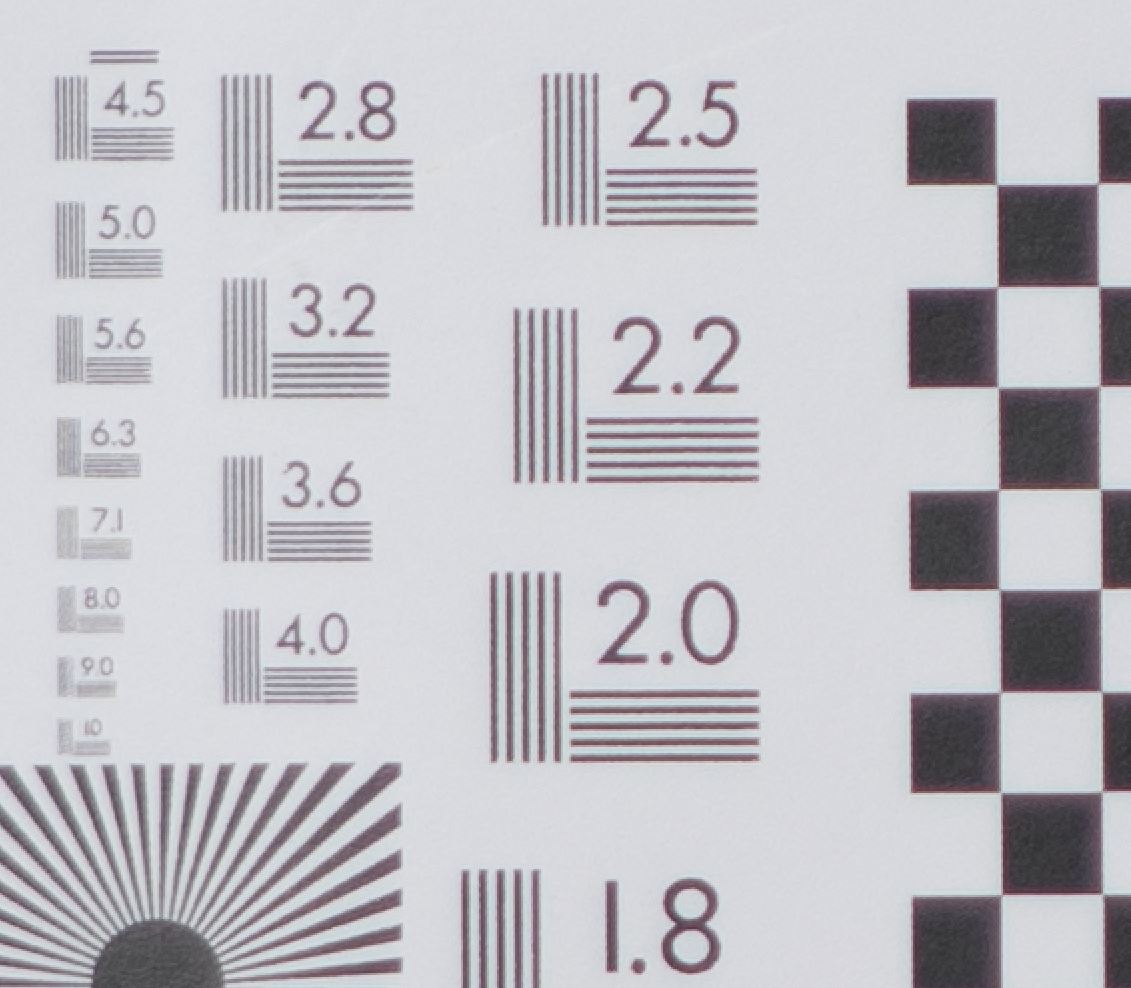
Here’s the upper-left corner of the chart at f1.8. Contrast is not as good as at the center, but still not a lot of chromatic aberration even at f1.8.
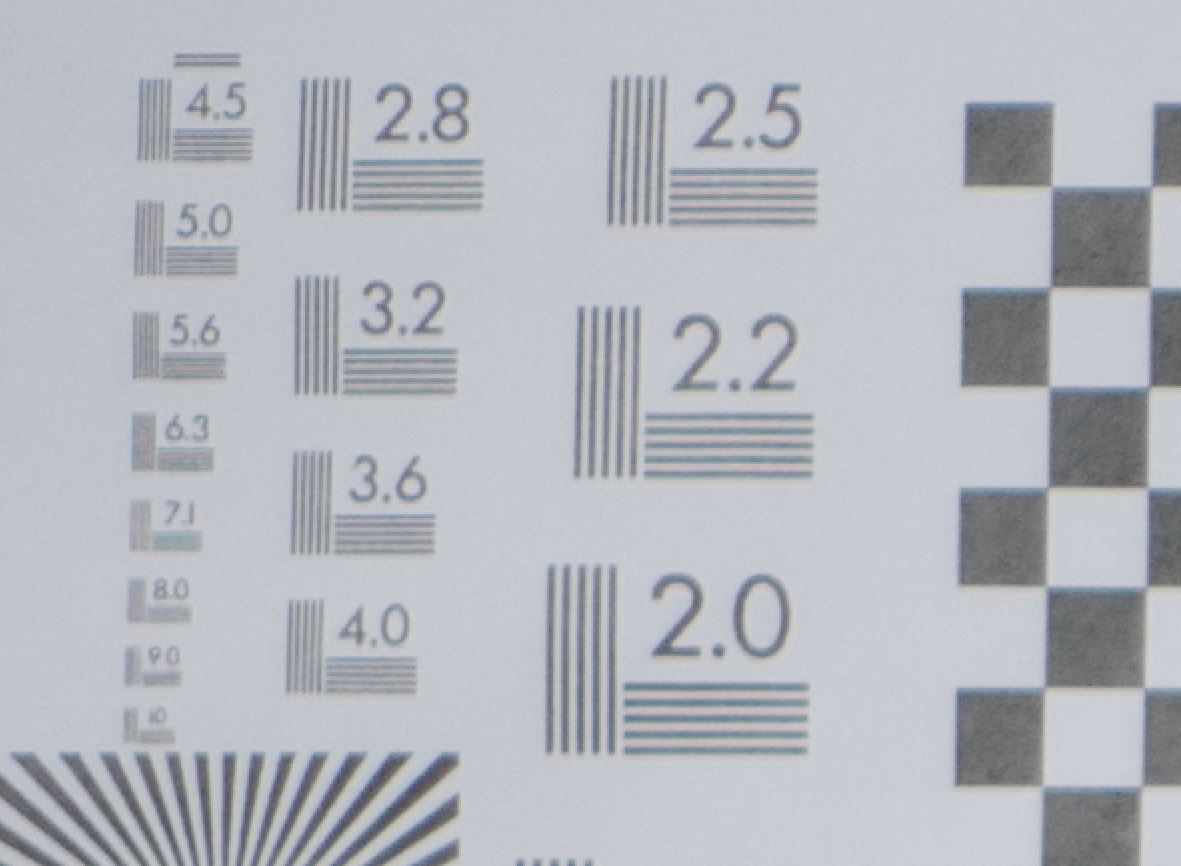
Here’s the center at f8. Oddly enough, there’s some color fringing here that did not appear at f1.8. It does seem “crisper”, but that may be because f8 is more forgiving of an aperture and easier to nail focus.
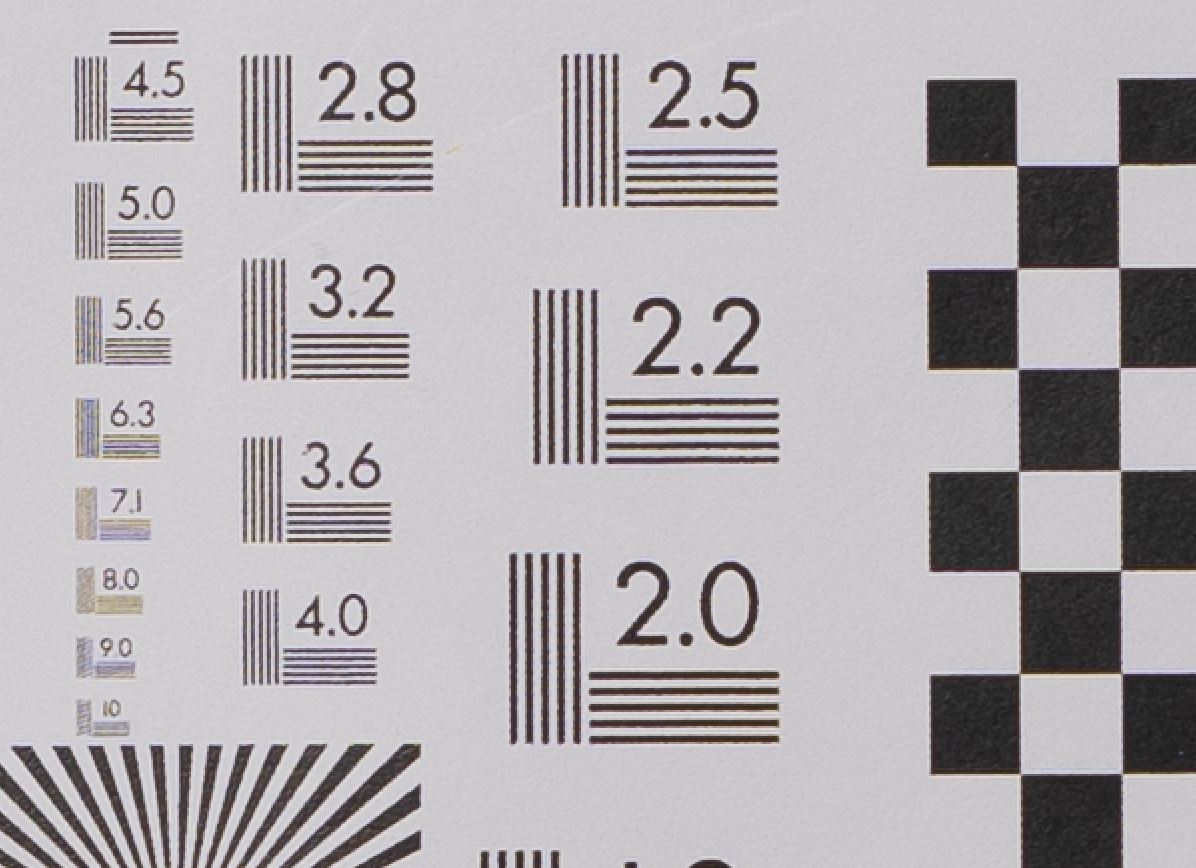
The corners are also a bit sharper, but still less contrast than the middle of the frame.
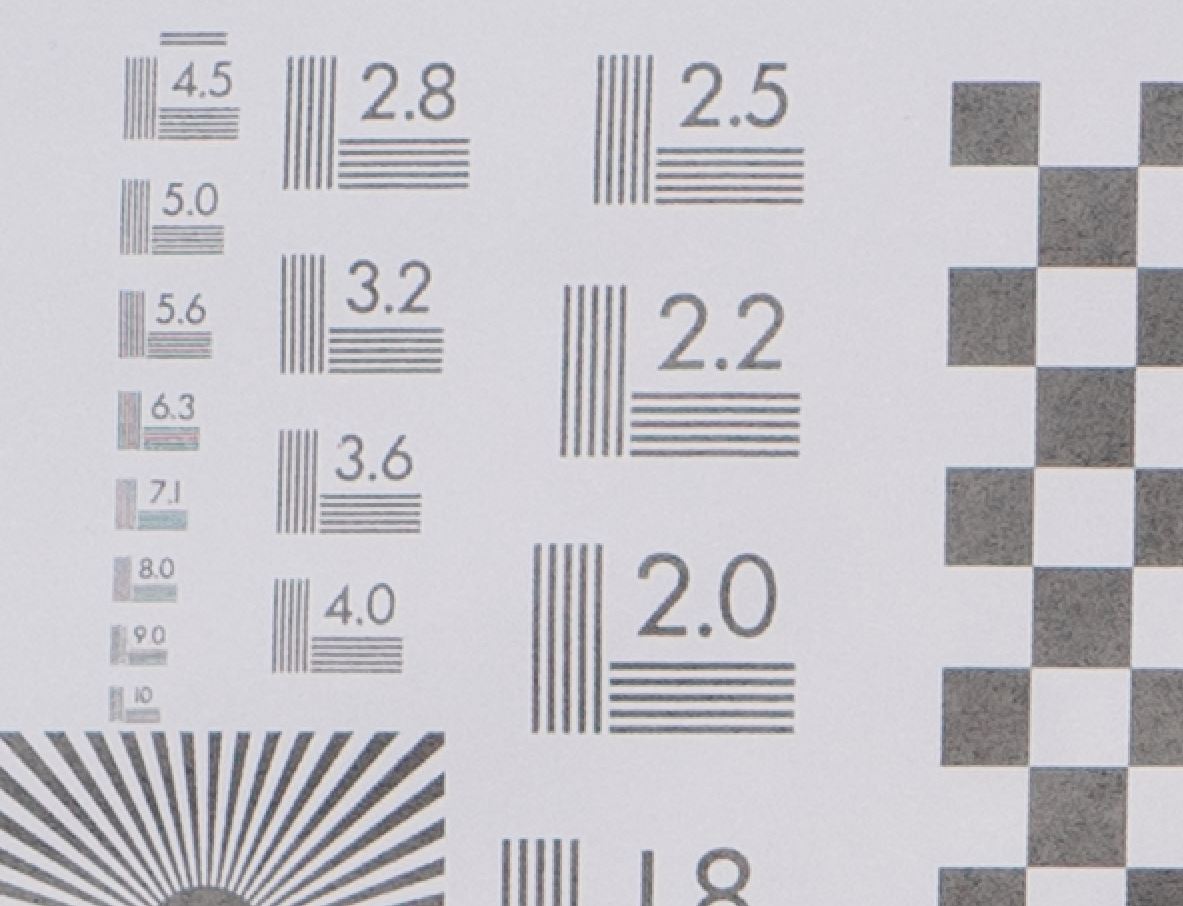
Distortion
Here is a lens distortion chart. This is a 2′ by 3′ dry-erase vinyl mat with a 1 inch grid printed on designed for playing D&D or other role playing games. You can get something like this Amazon for about $25. The red lines were added in using photoshop and show what a true straight line would be. There appears to a bit of barrel distortion, but not very much.
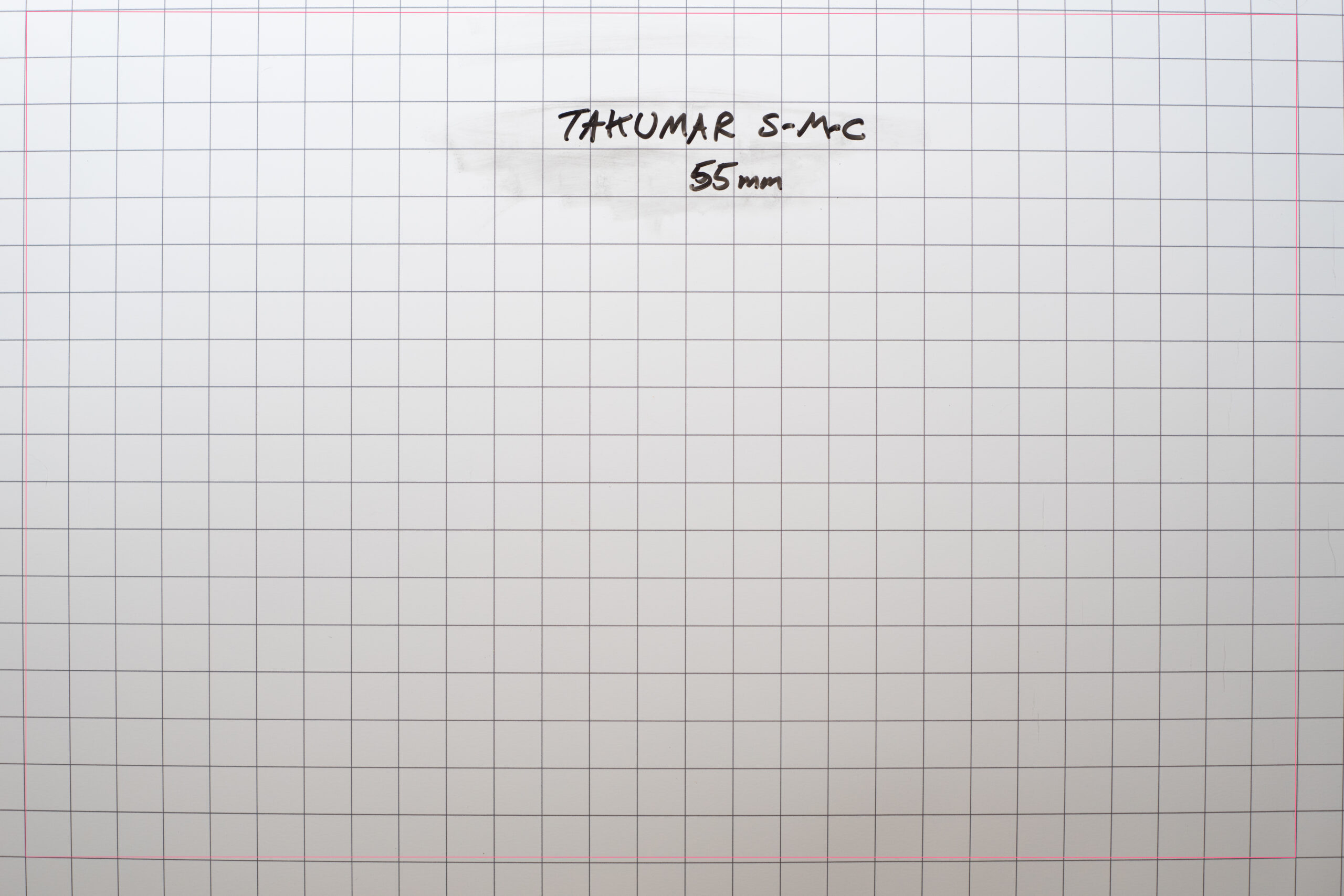
Sample Images
Here’s a picture of some white flowers that I purposefully overexposed a bit to see how badly it would “bloom” (the light, not the flowers). At f1.8 you can see some around the edges, but this is a 200% zoom
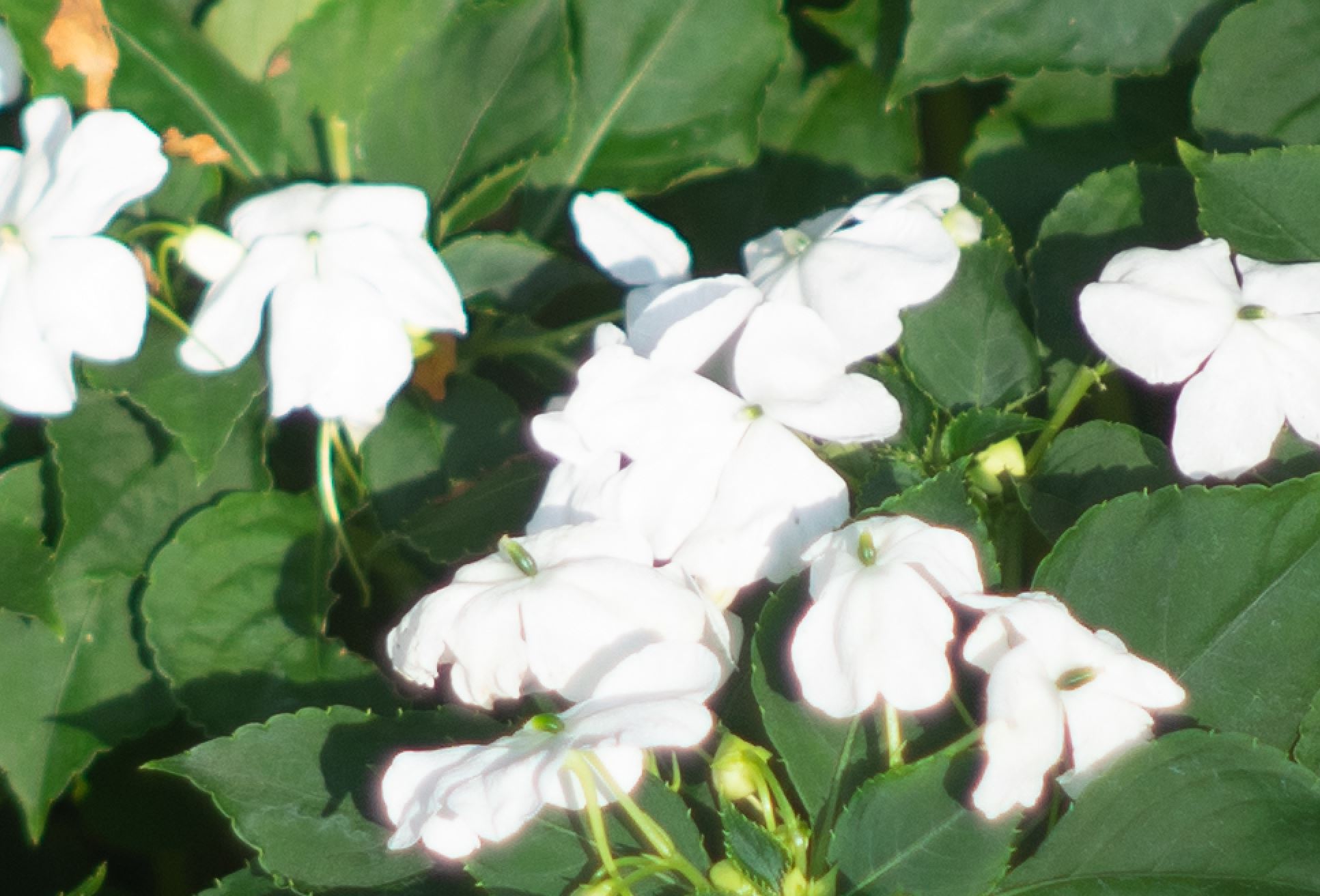
The same shot at f4 still has some around the the edges, but none at all in the center.
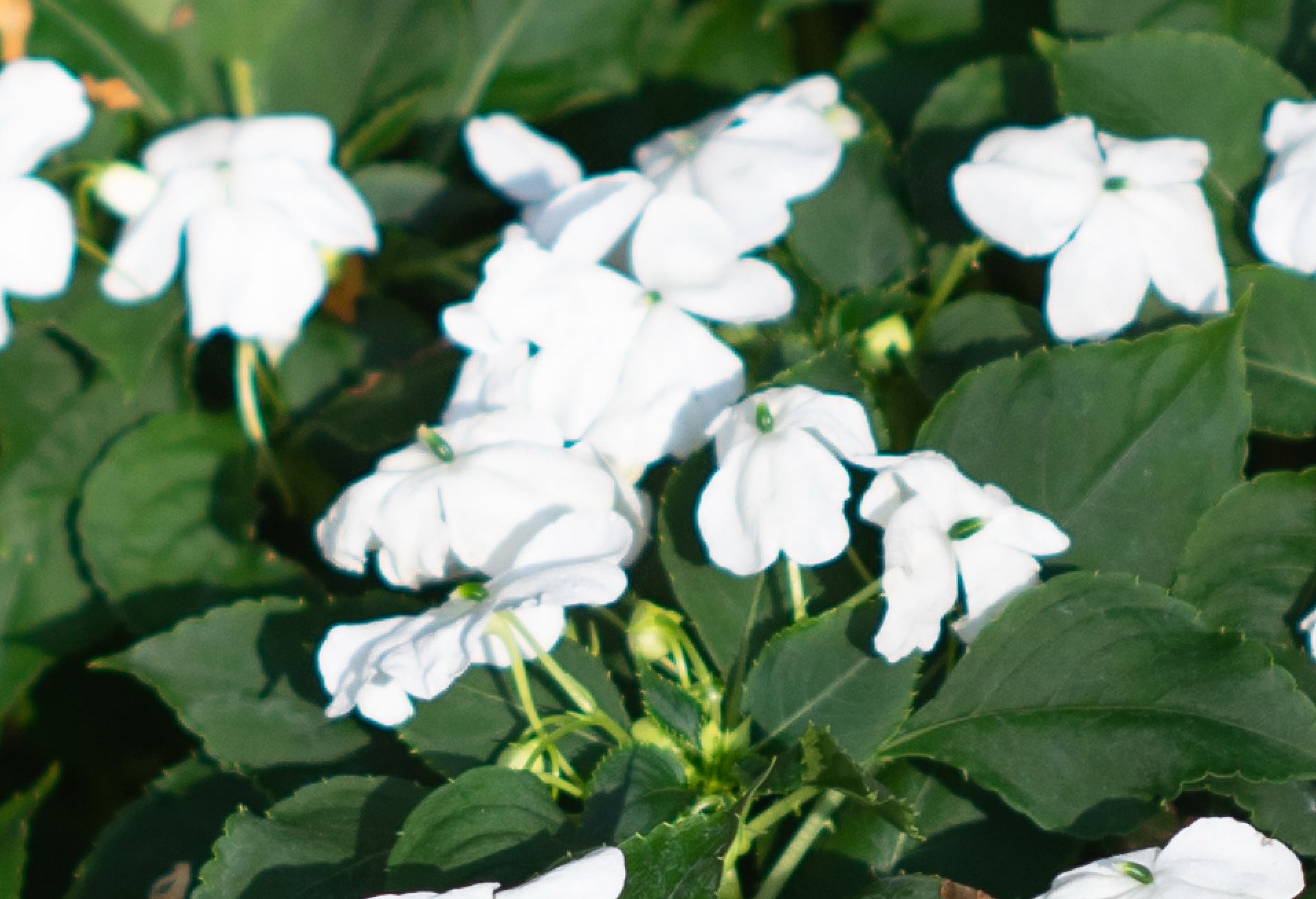
Finally, here are a couple of shots of a garden taken with this lens
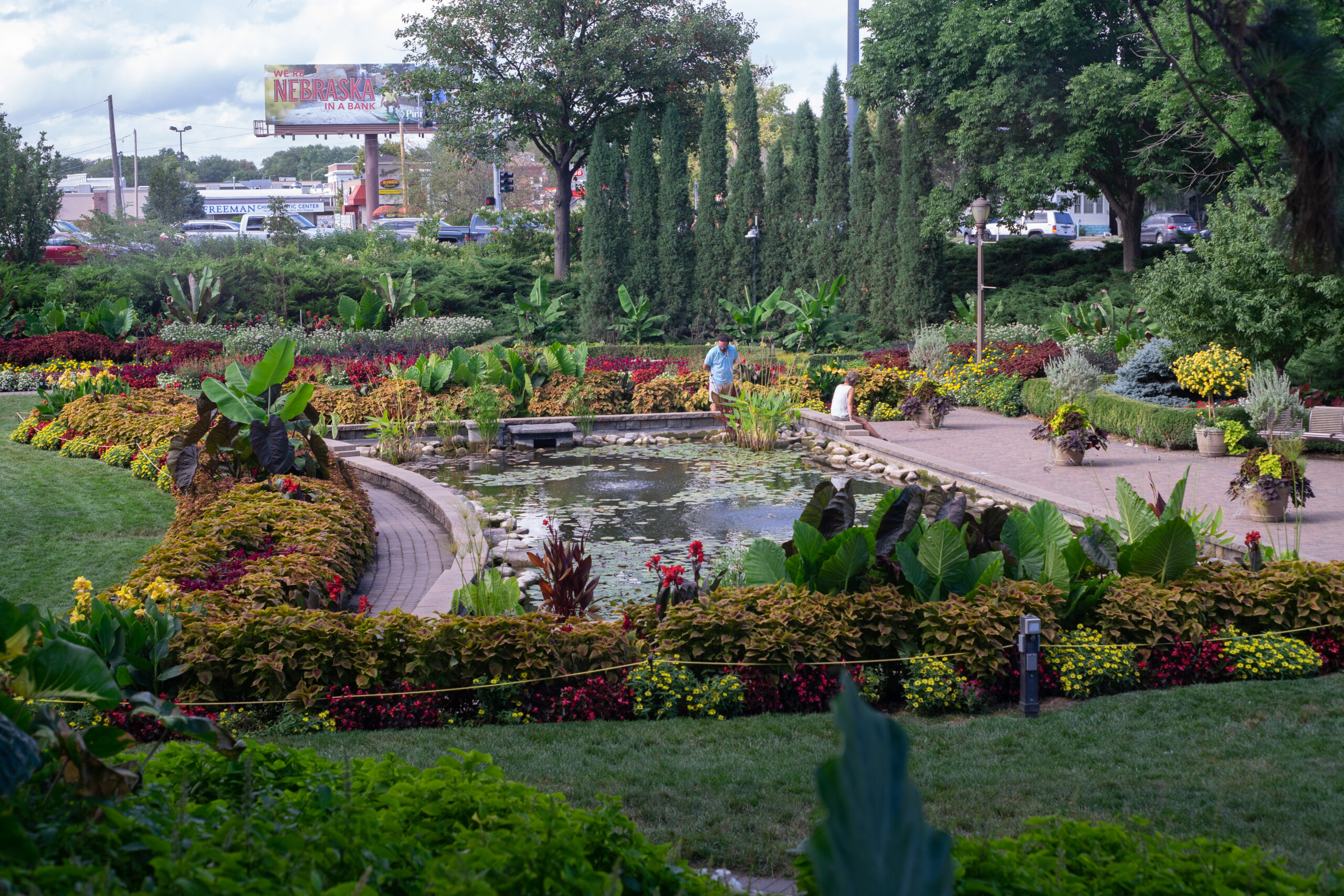
Takumar Super-Multi-Coated 55mm @ F8 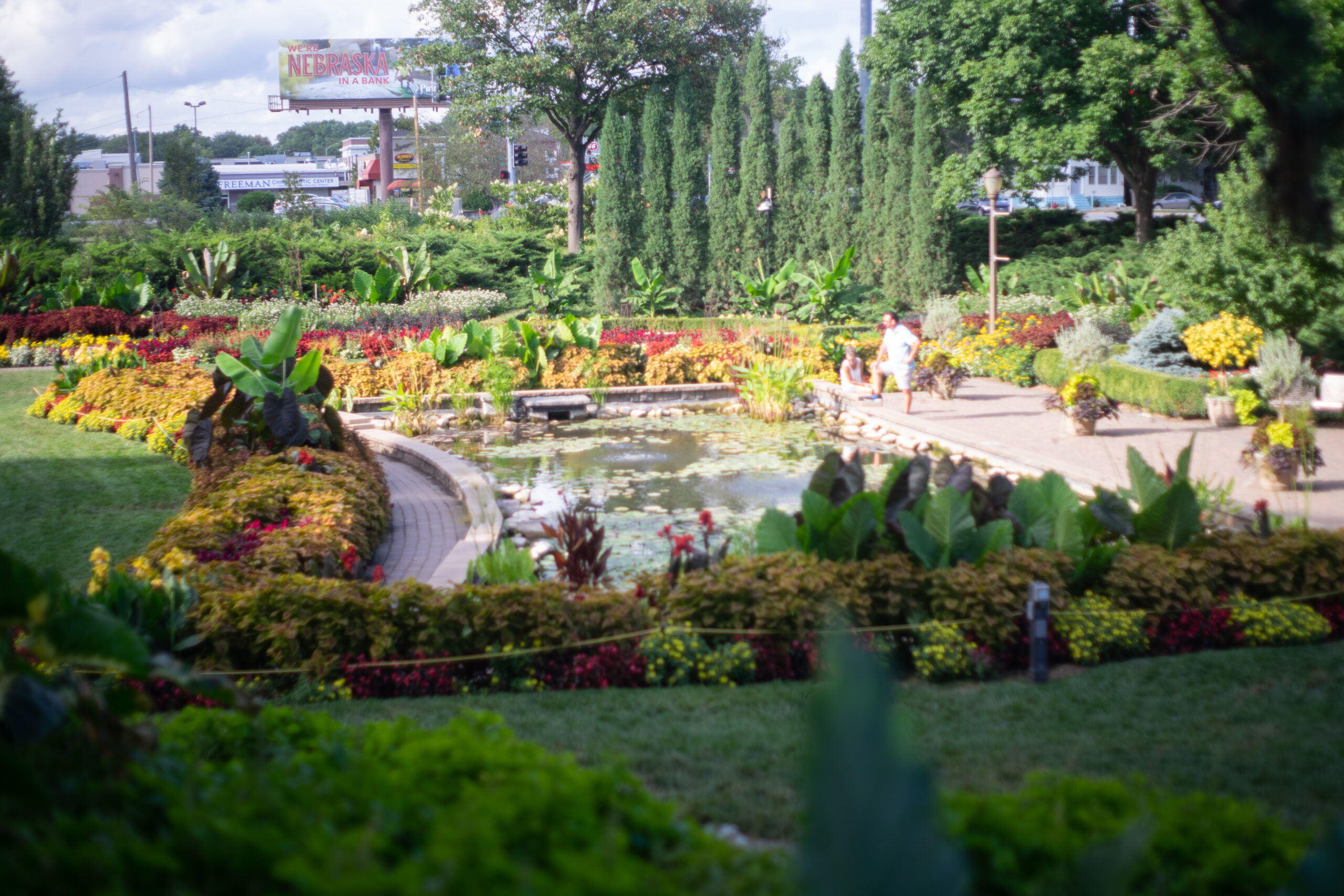
Takumar Super-Multi-Coated 55mm @ F1.8

